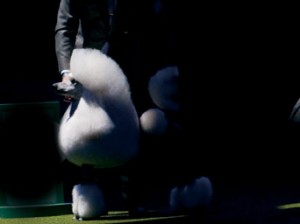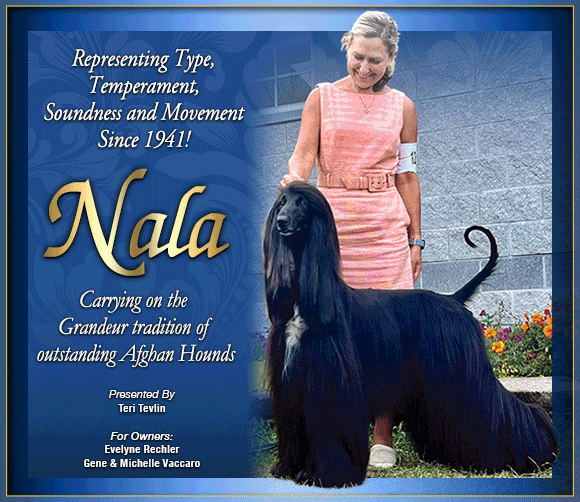From The CC Vault: Collaboration Vs. Competition
By Gay Dunlap
Originally published: January 2012
 I have been a breeder of purebred dogs for longer than many of you have been alive. I am not alone for, in fact, many share incredible longevity within the fancy. I lay claim to forty-two years and there are others who have been at the game even longer. It is to those of us old-timers that the paucity of quality in many Bred By Exhibitor classes looms as an often shocking state of affairs. A great majority understands the class, for all intents and purposes, to be a parade of our breeder’s best efforts. Such is not the case. Sitting ringside at a regional specialty recently, I was met by a well-respected breeder who counseled, “Wait until you see the Bred By bitch class.” Her dismay at the dismal quality of the class was made obvious by the inflection of her voice and accompanying eye-roll!
I have been a breeder of purebred dogs for longer than many of you have been alive. I am not alone for, in fact, many share incredible longevity within the fancy. I lay claim to forty-two years and there are others who have been at the game even longer. It is to those of us old-timers that the paucity of quality in many Bred By Exhibitor classes looms as an often shocking state of affairs. A great majority understands the class, for all intents and purposes, to be a parade of our breeder’s best efforts. Such is not the case. Sitting ringside at a regional specialty recently, I was met by a well-respected breeder who counseled, “Wait until you see the Bred By bitch class.” Her dismay at the dismal quality of the class was made obvious by the inflection of her voice and accompanying eye-roll!
Dedicated hobby breeders, especially those that meet the criteria to be labeled a “Breeder of Merit” should understand that the BBE class is reserved for our very best efforts in the whelping box. But do they? It is true that often our best are sent out with professional handlers and, unless we have co-bred with said handler, the situation precludes using the BBE class to show off our beauties. This fact notwithstanding, the BBE class still, more often than not, is filled with mediocre representatives of our respective breeds. I must say that Montgomery’s terrier show seems to fare better, since the “creams of the cream” are frequently held out for this special occasion. I watched each day as a handsome Smooth Fox Terrier, entered in Bred By, garnered Winners Dog three out of four days, and finished with three 5-point majors. It was a feel-good moment for those of us who thrill at the sight of a quality dog being recognized with such consistency.
Returning to mediocrity, why has this dearth of quality occurred and what can be done about it? Although I have pointed a finger at the BBE class, we often find it across the board. Obviously competition alone has not mastered separating the wheat from the chaff. A subscriber to the New York Times, I recently ran across an Op Ed written by Susan Orlean which followed the publishing of her new book, Rin Tin Tin: The Life and The Legend. She spoke of success being a drag, reminding us that we yearn for it, strive for it, but that when it finally arrives, it often sets off repercussions that can undo the success. She uses as an example the rise to popularity of the German Shepherd, which she lays at the feet of Rin Tin Tin’s larger-than-life persona. The subsequent over-breeding that resulted is what she deems to be the downfall of the breed.
I think we can all sight examples of how over-popularizing a breed can bring it to its knees. How many of our breeds in their early stages fought against AKC recognition and subsequent approval because of the fear of becoming too popular and, consequently, over-bred? In many instances such recognition represented loss of control, not at the hands of AKC per se, but because of the influx of breeders that came out of the woodwork. If memory serves me, the fabulous show record (Westminster and Morris and Essex wins among them) of the great Cocker Spaniel, My Own Brucie, took its toll on that breed as well. Suddenly everyone wanted a Black Cocker, my family included. Ours was named Kentucky Ebony (“Tuck” for short). “Brucie” was in Tuck’s pedigree and probably in most pedigrees at the time. “Brucie,” sired by Red Brucie and considered the result of “the Popular sire syndrome,” succumbed to a kidney and liver ailment at a youthful 8 years of age.
I remember a faction of Cavalier King Charles Spaniel breeders imparting dire warnings of the downfall of the breed if AKC recognition was to become a fait accompli. As for my breed, recognized in 1973, we were, at that time, a rather naïve bunch so it never occurred to us that our breed might suffer as a result of becoming too popular. I think you could safely say we were our own worst enemy, encouraging our puppy buyers to show and breed at every turn. What may be in store for the very appealing Russell Terrier as it enters the hallowed halls of approved breeds is anyone’s guess.
Media blitzing plays a role, as well, by messing around with our fears of over-popularizing and subsequent “bad breeding” as Orlean calls it. Just as the rise of the German Shepherd’s popularity is attributed to Rin Tin Tin and the Cocker’s to My Own Brucie turning so many heads, I well remember the Bull Terrier folks being quite disturbed when Target decided to use a white Bull Terrier with a red ring around one eye as its logo. Or the Irish Terrier breeders’ concern when the movie Firehouse Dog was released, featuring one of their own. And let’s not leave out 101 Dalmatians or Taco Bell’s Chihuahua.
It goes without saying that popularizing a breed correlates with defective genotype through thoughtless breeding practices. Many of our parent clubs find themselves dedicated to eradicating serious genetic defects that have been the result of such carelessness. And it is also true that once a small group of dedicated breeders lets go the reins of a breed and loses control, the resulting expansion can often spell tragedy.
But this tragedy is not always limited to the loss of healthy genes. It can relate to loss of phenotype as well. A prime example would be the little short-legged white sausages that we see being walked around the neighborhood by their owners who proudly proclaim them Poodles. But this is an exaggeration of the point I am making. Let’s bring the situation closer to home and back to the lack of quality, the drags of the breed, we find not only in our BBE classes but in the show ring as a whole. What might our choices be for improving the overall quality of our breeding programs and consequently the quality of our show dogs?
With a mind to achieving this very goal, the Briard Club of America, some years ago, designed an assessment program, patterned after one held in France (the Briard is a French breed). It is called Rassemblement and was initially presented as an educational program at the national specialty. It is now held every two to four years at the BCA’s specialty. Usually judged by European breed specialists, some 60 dogs generally sign up for the evaluation. The Rassemblement is basically a detailed analysis of each Briard entered as it relates to the breed standard, a step-by-step assessment of each part of the dog that creates the whole and subsequently provides an overall rating of each Briard. Not only does the program provide an assessment of each individual dog but it also serves as an educational tool for all breeders that can ultimately be used for making breeding decisions.
Similarly, the Golden Retriever Club of America has their Certificate of Conformation Assessment (CCA) program, developed in 2004. This is also a non-competitive event held in order to test individual dogs on their physical conformation and temperament qualities as mandated in the breed standard. The chasm that exists between Golden Retrievers in the show ring and those in the field is broad and consequently seriously illogical in some minds. After all, who decided that a field dog couldn’t be pretty or that a show dog couldn’t be successful in the field? In his article Finding Your Dream Dog (printed in the June/July 2005 issue of Gun Dog Magazine) author James B. Spencer discusses this dichotomy with great clarity. He points out that historically those interested in purchasing a Golden Retriever pup were forced to make a choice between a physically attractive dog (from show lines) or one from field lines with looks often leaving much to be desired. The result is that the intense competition in conformation rings and field trials has split most sporting breeds into two “sub-breeds.” The primary goal of GRCA’s program is to bring these sub-breeds together in terms of conformation and field trial prowess. At the same time, it is hoped that the overall quality of both “sub-breeds” will improve although it seems the field trial Goldens are the only ones taking part in this effort currently.
Meanwhile, my own club, the Soft Coated Wheaten Terrier Club of America, is embarking upon its own Conformation Assessment Program (CAP) with the hope of pulling the quality of our breed up by its proverbial bootstraps. The idea, presented at our annual meeting in October, met with unadulterated praise. The first evaluation will be held in conjunction with the Palm Springs show in early January so it is yet to be determined if our breeders will “put their money where their mouth is.” Not everyone wants to hear the truth unless, of course, it is complimentary. We consider this a ground breaking program since no other club, to our knowledge, has embarked upon such a program with the hope of improving overall breed type, both conformation and temperament. Our intention, apart from the long-term goal of improving breed type, is to educate our breeders through collaboration rather than competition, using the program as a method of teaching breeders to not simply look, but actually see where and to what degree a dog falls short of meeting the breed’s standard of perfection. Or conversely, which of a dog’s individual traits might be exemplary. For example, we want to teach our breeders to look at a dog and truly see that it has a blocky head rather than the requisite rectangular head; that the term “square” means just that, and applying the equation “withers to tail = withers to ground” does not visually create a square dog. Or (using a typical terrier’s outline) that when a dog’s tail is set too far off the end of the back the entire silhouette is compromised. Are our expectations just so much whistling in the wind…a futile endeavor? Is all of this too much to ask? Perhaps. Time will tell if our dream of creating a group of breeders with that incalculable trait, an “eye for a dog,” is legitimate or little more than a pipe dream.
Short URL: https://caninechronicle.com/?p=249688
Comments are closed












